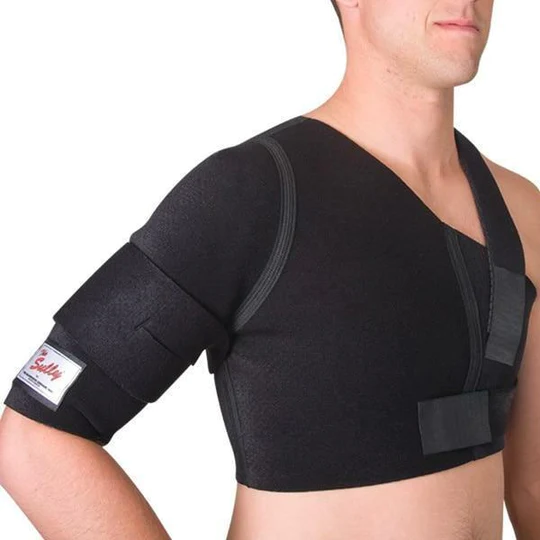For those leading active lifestyles, recovery is just as essential to peak athletic performance as daily exercise. Without taking time to rest seriously, you’re more likely to become injured. In addition to adequate rest, it is necessary to wear the right gear to support the recovery process should you become injured or require surgery for a full recovery.
Supportive gear that protects the body against injury can enhance recovery and prevent consequences from physical activity. Depending on the type of exercise routine or sports you practice, you may need different types of supportive gear to protect the body from injury. For example, soccer players wear shin guards to protect their legs from injury on the field, and boxers wear gloves to protect their hands during matches.
The same need for protective gear applies to those who focus on upper-body strength. An area of focus for upper body workouts is the shoulders. Wearing a shoulder brace is essential to stabilize and prevent the expression of movements that can lead to injury. If you are partaking in upper-body exercise, read on to learn if you need the support of a shoulder brace, such as the sully shoulder brace, to stabilize your shoulder following an injury or surgery.
Table of Contents
When do you need to wear a shoulder brace?
- A shoulder brace is designed to support the shoulder post-injury or after surgery. It stabilizes and assists in the recovery of the shoulder muscles by restricting movement and allowing healing to occur in the most effective and protective ways possible.
- If you’re recovering from injury or surgery, it may be advised by your physician to wear a shoulder brace like the sully shoulder brace.
- Additionally, if you’re experiencing discomfort in the shoulder area, get checked out by a doctor, and if advised, consider purchasing a shoulder brace tailored to your needs or one your doctor recommends.
- Using a shoulder brace without medical encouragement is not advised, as restricting movements unnecessarily may lead to injury.
Note: There may be some exceptions when wearing a shoulder brace as a preemptive way to avoid injury is acceptable. Talk to your doctor to determine if this approach is right for you.
How can you avoid injury from athletics?
Injury is often the result of poor form and increasing intensity too soon.
Refrain from attempting workouts that are too advanced for your current fitness level or strength. Attempting physical tests of strength that your body is unprepared for is more likely to result in injury. Build your strength gradually and use the correct form for each exercise you complete, whether you’re strength training, swimming, holding plank pose, etc.
How does the sully shoulder brace promote recovery?
The sully shoulder brace is adjustable, conforming to the recovery needs of the wearer. The straps can be adjusted to support the recovery needs of the individual. The straps are made from neoprene, so the material is breathable and supportive enough to move naturally with the athlete’s movements. The sully shoulder brace is made to feel like the straps are part of the body’s normal motion.
Limiting movement in the recovering area(s) is vital to recovering from surgery or injury. A supportive shoulder brace like the sully shoulder brace will restrict movement for the wearer, helping them recover faster with added support. Given that the sully shoulder brace creates a controlled motion range, the shoulder can recover faster because the wearer is not overexerting themselves in ways that slow down or hurt the recovery process.
The sully shoulder brace is designed to do the following:
- establishes a controlled motion range for instabilities of the anterior, inferior, multi-directional, and posterior components
- minimizes muscle straining through shoulder immobilization and limited motion range
- protects rotator cuff and AC separations
- provides extreme support without compromising comfort
- contains neoprene grips to support natural movements
- has the option to hook elastic straps to neoprene in any position
Achieve a smoother recovery with recommended supportive gear.
Don’t let mild pain in your shoulder build up before you address it. To prevent injury severity or interference with post-surgical recovery, ask your doctor if wearing a shoulder brace like the sully shoulder brace will benefit your healing and allow for a smoother recovery process.
Mixing and Matching: Unleashing Creativity in Your Wardrobe Styling
Custom Knee High Socks: A Canvas for Art and Expression


